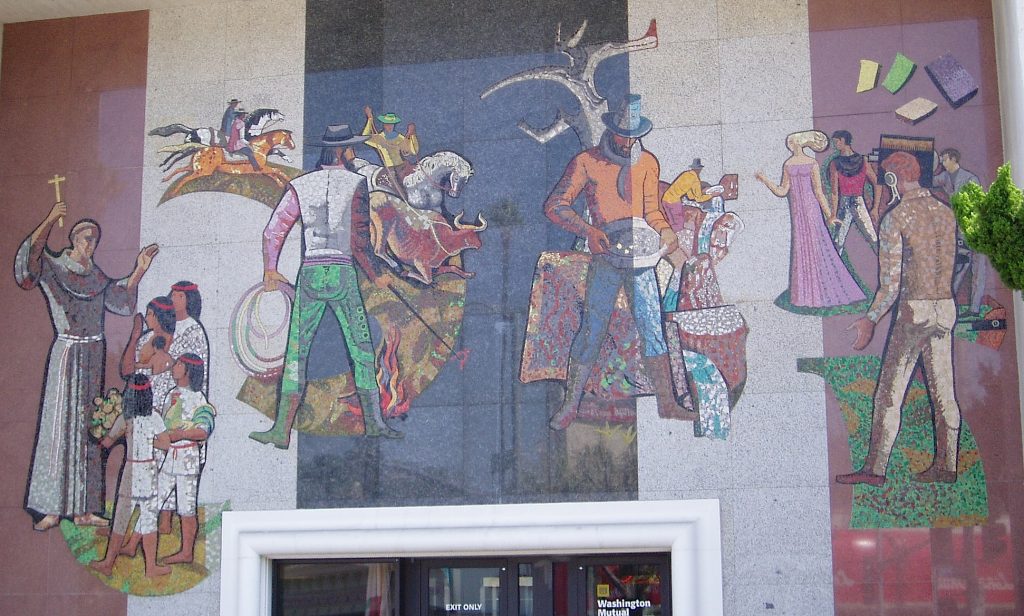Now that we have taken a tour of all the various media used by the Millard Sheets Studio, I will focus in on the images and juxtapositions that first drew this historian of nineteenth-century North America to this project about post-World War II Southern California.
Before I learned that there were so many, and so varied, artworks in the Home Savings banks, my mind fixated on the history images, in grand, prominent locations, like the parade of figures at Garnet in San Diego, the collection at Sunset and Vine, or this mosaic, commanding an entrance to the San Fernando Valley in Studio City.
In four figures, this Sheets Studio mosaic tells one story of California history, expanding on the history of “From Oranges to Oscars” discussed last week. The Franciscan friars came to Christianize California’s Indians; California’s frontier was a place of vaqueros, ranching and cowboying according to Spanish and Mexican traditions before the coming of American control; the gold rush changed everything; and, in this rendition — presto! California was ready for the magical transformations of Hollywood moviemaking.
Clearly, a lot is missing from such a history. But I would rather focus on what draws these four scenes together, and how they might have been chosen to tell their story together, on the bank facade, in giant figures.
First, these are clearly picturesque moments in California history, moments long remembered for their adventure or intrigue or possibilities. As I have noted, there is an attempt to tell happy, uncomplicated stories — no Okies arriving out of the Dust Bowl, no Zoot Suit riots, not even the proud shipbuilding of Californians during World War II. We academics now have a greater sense of the displacement caused by the Missions and the gold rush, but they remain storied moments in the public’s perception of California history. And perhaps their rootedness, their long histories, was intended to rub off on the new movie business, and the new bank in the still-newly-suburbanizing San Fernando Valley.
Are the images about history, or about movies? Given the gaps and the connection to nostalgia, it can be hard to distinguish the two. The camera does point left, taking in the dramatically dressed woman but also, perhaps, the character drama of a Franciscan friar, a vaquero, or a prospector, each a common figure in the radio dramas, films, and television shows of the twentieth century.
One formal question to ponder, too: Why the tricolor background? Merely to highlight the colors, and give a chance to add depth to the figures? Or something about the amounts of marble needed for such a large space? One more thing to research, I suppose.

For Mexicans, the red-white-green is an obvious reference to the Mexican flag.